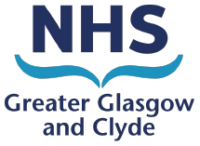Since 2019 we have been storing information about future care planning on Clinical Portal. The document can be edited by any member of staff to record people’s wishes and preferences. It also gives the opportunity to document clinical management plans, record Power of Attorney details as well as DNACPR discussions. A copy of this document is automatically shared with GPs who can update information on the Key Information Summary (KIS). Primary Care staff can read the latest ECS and KIS directions from Scottish Government here. Staff should check both KIS and the Future Care Plan Summary to ensure they have all information available.
In 2023, we started to use the phrase “Future Care Planning” instead of “Anticipatory Care Planning”. This helped us to emphasis how broad these conversations can be, and all the different topics we can talk about.
As of June 2025, our digital documentation on Clinical Portal now reflects this language. There have also been a few other changes to the documentation we wanted to highlight.
The document is now called the ‘Future Care Plan’ Summary, not the “Anticipatory Care Plan” Summary.
You will still find the document stored under “Care Plans” in the category view, or “Acute Specialities GGC” in the speciality view. The phrase “Anticipatory Care Plan” may still appear in places due to legacy systems, but this should not cause alarm. When creating a new plan you should still go to the “Forms & Pathways Tab” and then click “Add/update Future Care Plan” on the left hand side.
Remember if an old version of the plan exists (i.e. it is still called the Anticipatory Care Plan at the top of the form) please “close” the form, so that the new format can be activated at the next update. You can note that there is an older version on file within the “Special Notes” section of the new document. You don’t need to copy all previous information into the new form, staff should use their own discretion to transfer relevant information.
New options for the Job Role, Area and Trigger drop downs
Care Home and Hospice staff should now select this as their “Job Role” and select the appropriate HSCP they are based in as their “Directorate”. This will help us identify local engagement more easily.
Additional “trigger” options have also been added to the digital document including “Hospital At Home” and “Assessed by HomeFirst Response service” – please use these when necessary.
Please note the PDF version of the form does not include these additional triggers, however it can be noted under “Other”.
Confirmation of Power of Attorney Documentation
Staff should ask to see a copy of any Power of Attorney documentation and record when this happened. Some people may be confused between different legal paperwork (Wills, Types of Power of Attorney, Guardianship Orders, Advance Directives etc) so this helps ensure that everyone knows who has the authority to make decisions for someone.
New question on Treatment Escalation Plans
Treatment Escalation Plans (TEPs) are becoming more common in our Acute sites. If someone has a TEP completed while in hospital this should now be recorded in the Future Care Plan, stating the date, which hospital they were in and the level of escalation suggested.
Recording this information will help us monitor TEP uptake as well as alert community staff to some of the conversations that may have occurred already and which they can build on as they continue to have Future Care Planning discussions.
The PDF version of the Summary has also been updated to reflect the new layout and data that is captured on Clinical Portal.
Within the Board, we believe future care planning is everyone’s responsibility. This is one of the reasons that we have chosen the Clinical Portal system to store future care planning information as it is accessible by Acute, Community and Primary Care as well as Social Work. This means that the majority of health and social care professionals can access and update this information.
We acknowledge that different services will have different conversations based on the roles and remits of the team, however by bringing this information into a central location we can easily share information and help to create person-centred care plans which reflect the wants and needs of people. Therefore our Summary should not be viewed as the responsibility of one individual or service, but rather a dynamic document with many people contributing information.
It is also worth re-iterating that conversations about future care should not just be limited to people at or nearing the end of their life. These conversations can be useful for people at any age and stage of their life and the level of planning required will depend on where someone is in their life journey. We are also encouraging all staff to consider whether someone could benefit from a Frailty Assessment using the Rockwood Clinical Frailty Scale, the results of which can be recorded on the online summary. Early identification and monitoring of frailty is important to help create plans which can slow decline or in some cases reverse frailty. From more information about the Clinical Frailty Scale and other staff training visit the Training Hub.
There is a wealth of resources for the public including webpages which explain many different aspects of future care planning. There are leaflets which can be printed off with further information (these can be found on the Useful Documents and Resources section of the webpages) and also recordings of events covering various topics.
Full details of the approach to Future Care Planning within NHSGGC can be found in the Guidance/Standard Operating Procedure Document. Please note this will be updated to reflect the new terminology in coming months.
You can contact ggc.HomeFirst@nhs.scot with any questions or for further information.
